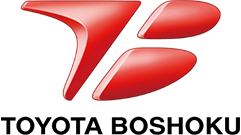Hydrogen-based fuel supply system contributes to carbon neutrality
Hydrogen energy is gaining attention in a decarbonizing society
Decarbonization initiatives are accelerating worldwide. More than 150 countries and regions, including Japan, aim to achieve carbon neutrality by 2050. Carbon neutrality entails balancing the amount of greenhouse gases emitted and absorbed, so that overall emissions are zero in real terms. To achieve this, it is important to reduce CO2 emissions. For this reason, hydrogen energy is attracting attention as a new energy source.
Hydrogen energy is generated through the combination of hydrogen and oxygen. Only water is emitted during power generation, and no CO2 is produced during energy use.
In addition, hydrogen energy can be created almost indefinitely. This is because hydrogen can be produced via electrolysis of a wide variety of substances, including water, petroleum, natural gas, chemical plant by-products, sewage, sludge, and other waste products. Furthermore, if a substance such as water is electrolyzed to hydrogen, it can be used as energy when and where needed, making it convenient in terms of storage and transportation as well. For example, if part of the electricity generated by solar power on a sunny day is converted to hydrogen, the hydrogen can be used to generate electricity on cloudy days. Hydrogen energy is also suitable for use in conjunction with natural energy sources, which are unstable in terms of power generation.
For these reasons, Japan as a country is promoting the use of hydrogen energy, and a growing number of municipalities and companies are working to utilize it. Hydrogen stations are also being installed throughout Japan as fuel supply facilities for fuel cell vehicles (FCVs) that run on hydrogen. Toyota Motor Corporation unveiled the MIRAI fuel cell vehicle in 2014, and a FCV model of the Crown in 2023.
System development utilizing Toyota Boshoku's technology and expertise
In preparation for the advent of a hydrogen society, Toyota Boshoku is working on the development of a hydrogen power system, which can be used to fuel all types of mobility. This system incorporates the core technologies we have developed over many years, including our high-precision stamping and plastic molding technologies. Also, in order to achieve mass production, we are utilizing the technology and know-how of products such as the FC separator and air filter used in the MIRAI.
Hydrogen Power System

The hydrogen power system features a downsized version of the water-cooling fuel cell (FC) stack that powers the fuel cell vehicle (FCV), achieved by reducing the cooling device through an advanced thermal management system, and by using a high-rate lithium-ion battery (LiB) to assist with instantaneous input and output. In addition, the hydrogen tank is the size of a PET bottle for ease of handling. These features allow for both quick fueling and low pressure (less than 1 MPa), so no handling license is required.
As a result, we expect it to be used not only in cars, but also in electric bicycles and other forms of compact mobility. The abundant energy volume of the hydrogen tank also allows the tank to be used for long periods of time when traveling to distant locations.

A hydrogen power system for all types of compact mobility
In the future, we aim to install the hydrogen power system in all types of compact mobility, from electric bicycles for business use, such as sharing services and delivery services, to electric wheelchairs used in medical facilities.
To achieve this, we believe it is important to further reduce the system size and increase stack power density. In terms of system downsizing, we are working to integrate the system components and achieve consolidation through functional fusion. In terms of stacks with higher power density, we will design and develop FC stacks suitable for compact mobility from scratch. We believe that the key factor in development will be the press molding technology we have amassed through the FC separator and air filter used in the MIRAI.
Toyota Boshoku will continue to contribute to carbon neutrality through the development of the hydrogen power system.

 Media site to convey the Toyota Boshoku group vision for the future and initiatives
Media site to convey the Toyota Boshoku group vision for the future and initiatives



